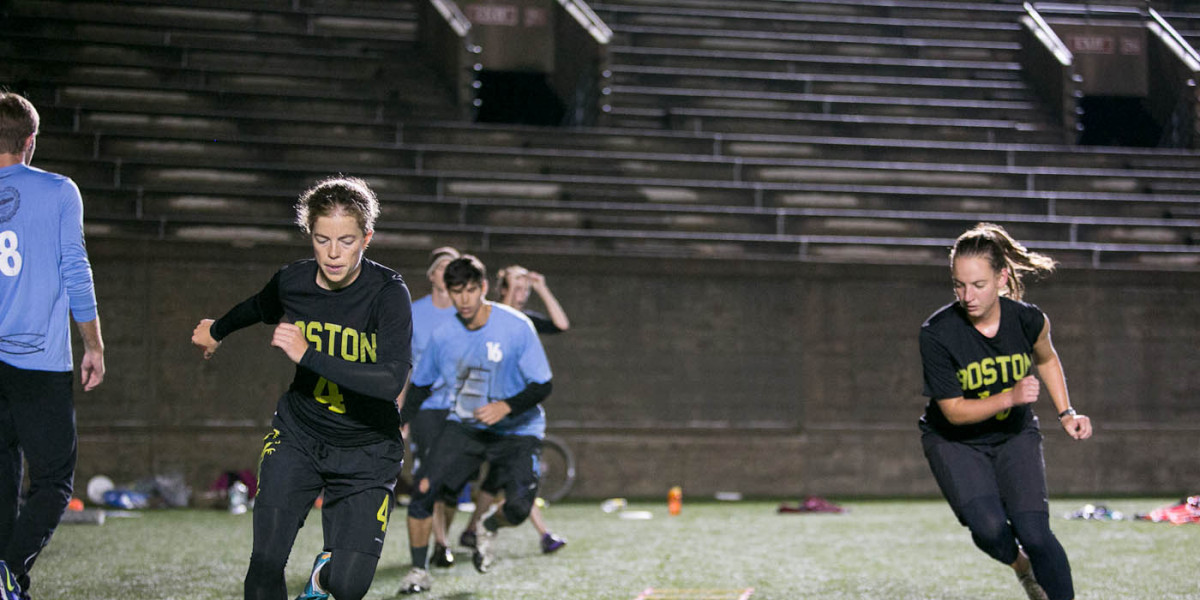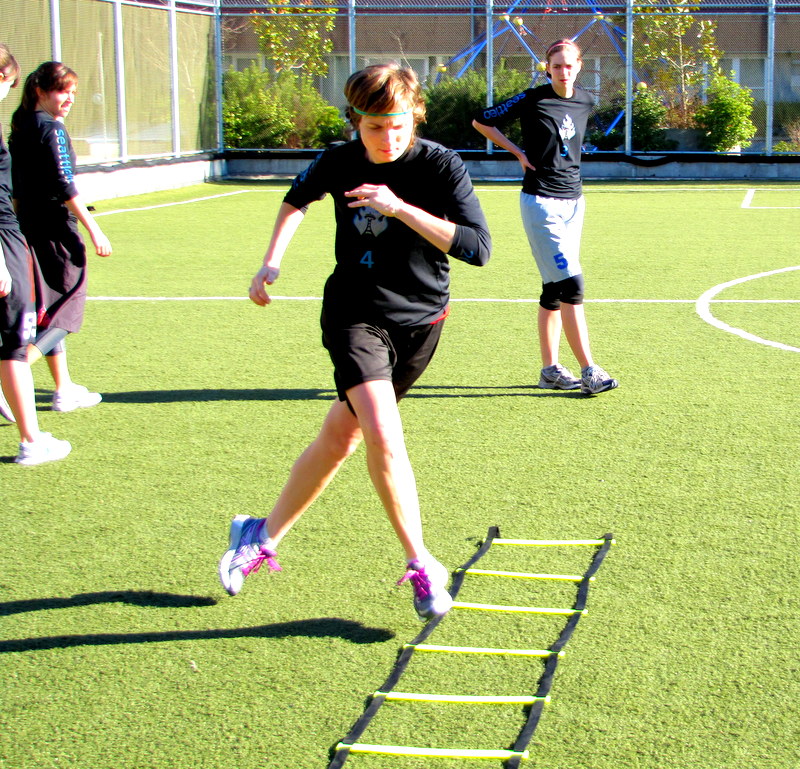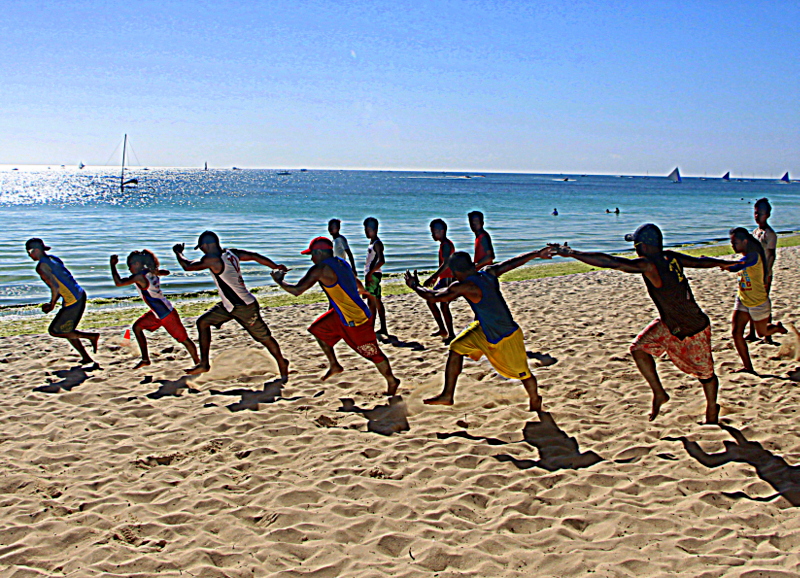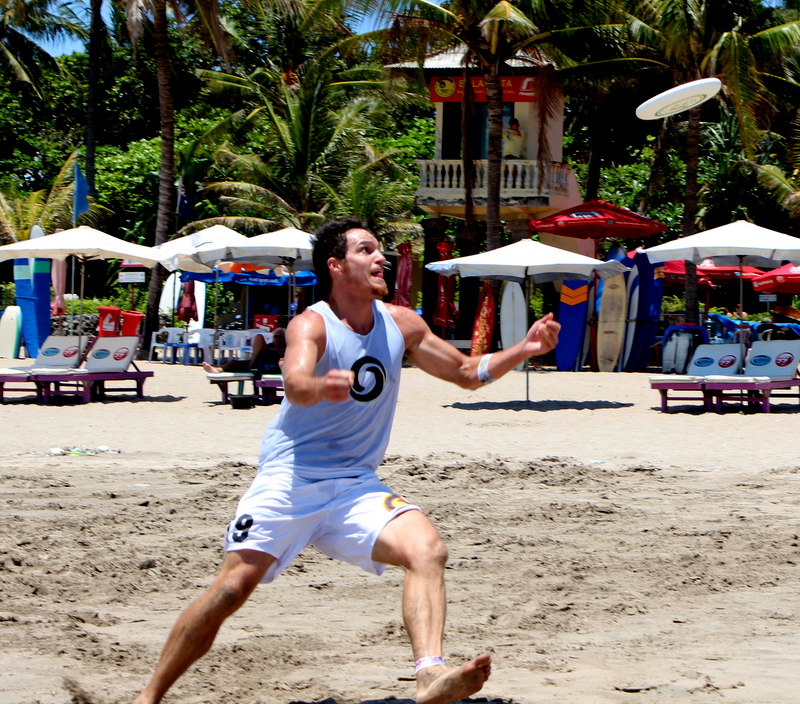
“Y’all in the same spots / me I’m dodging rain drops” – Jay Z, On To The Next One
Agility is one of the most frequently-cited skills for being an effective ultimate athlete. But what is agility? How do we develop it and train for it? We want to stick to our man’s hip on D, scrap our way through holes and openings in a zone, cover ground on the mark, change direction on a dime and get open at will. We want to be unguardable. In order to optimize agility performance, we must develop a system and methodology around developing its development. Luckily, I have spent the past six years working on developing a system around agility, and this summer it is finally ready to be released. In part one, I want to begin by offering up a piece of Morrill Performance’s The Foundation. Let’s do this!
Defining Agility
Agility is a complex quality that encompasses an athlete’s entire movement skills set. It has been broadly defined as an athlete’s collective coordinative abilities (Plisk, 2008). Many sports require athletes to quickly transition from one movement skill to another, often in response to a stimulus, such as a ball, puck or opponent. Therefore, agility can be thought of as having two primary components: cognitive and physical (Gambetta, 2007). The cognitive component involves reaction time and decision making abilities. Reaction time is the elapsed time between recognizing the need to act and initiating the proper action (Klika, 2010). The physical component involves the athlete’s movement and force application skills. Verstagan and Marcello (2001) state, “agility permits an athlete to react to a stimulus, start quickly and efficiently, move in the correct direction, and be ready to change direction or stop quickly to make a play in a fast, smooth, efficient, and repeatable manner.”
Measuring Agility
Agility tests traditionally involve a short course featuring multiple changes of direction, in which the athlete attempts to complete as quickly as possible. Many agility tests are general and are used with multiple sports. A well-established protocol, The Illinois Agility, has been used by coaches for decades and is considered to be both valid and reliable (Gambetta, 2007). It involves multiple slalom cuts and 180-degree turns (Gamble, 2010). Other popular agility tests include the T-Test, the Hexagon Test, the Ajax Shuttle and the Edgren Side Test (Clark & Lucett, 2010; Cook, 2003; Gambetta, 2007; Plisk 2008).
The National Basketball Association (NBA) combine uses the Pro-Lane Agility drill, which involves a sprint, back peddle and defensive slide around the key (Clark & Lucett, 2010). The National Football Association (NFL) combine uses the 5-10-5 or Pro Agility drill. Beginning from a three-point stance, the athlete moves laterally five yards, performs a 180-degree turn to sprint ten yards then performs a final 180 degree turn and finishes with a five-yards sprint through the start line (Gamble, 2010). The NFL combine also uses the 3-Cone drill. This drill is also known as the L-Drill because three cones are spaced to form an “L” shape. The course features a 90-degree cut toright, a 180 degree pivot and turn, and a 90-degree cut to left (Gamble, 2010).
Gamble (2010) suggests that many of the most common tests used to measure agility do not take into account the cognitive component of agility. Because these courses are preplanned, the athlete knows exactly where to move, meaning no reaction time or decision making is involved. Therefore, these common “agility tests” may not truly test agility; but rather, only the physical qualities involved in agility. These physical qualities (acceleration and change of direction), however, are the foundation of agility performance, making these tests somewhat relevant for assessing agility skills (Gamble, 2010).
Training for Agility
Because agility is a dynamic quality, training to increase it demands a dynamic and multi-dimensional approach. Adequate strength and power are required to produce and absorb force during acceleration, deceleration and change of direction. These qualities can be enhanced through conventional strength and power training methods, such as those listed in chapters 1 and 2. An implement commonly used when striving to develop agility is the agility ladder. Boyle(2004) notes the agility ladder as a great tool for developing some of the qualities that contribute to agility, such as balance, foot speed, coordination and eccentric strength. Other tools such as rings and hurdles are also used for agility training (Boyle, 2004).
Other methods of enhancing agility include movement skills training and open and closed agility drills. Because a great many implement free options are available to enhance agility performance, the majority of the discussion on training agility is featured in the following section.
Training Agility: Implement-free
Agility encompasses an athlete’s entire movement skills set. The ability to execute these skills can be enhanced through strength and power training, movement skills training and the use of closed drills. The cognitive component of agility can be enhanced with open drills.
Strength and Power
As mentioned in the previous section, the enhancement of strength and power qualities can improve the control and explosiveness of the athletic movements involved in sport and agility performance. Of particular interest is eccentric strength, rate of force development and reactive strength. The need to enhance these qualities is illustrated when analyzing agility tasks such as changing direction. High forces are absorbed eccentrically as an athlete decelerates and plants their feet to change direction. Emphasizing the eccentric portion of movements can increase the athlete’s abilities to absorb force (Plisk, 2008; Young & Sheppard 2011). Implement-free strength training exercises, such as the Bench Hip Lift can easily be manipulated to emphasis the eccentric portion of the movement. Eccentric strength can also be enhanced by emphasizing the ability to “stick” a landing. For example, Single Leg Altitude Drop and the Single Leg Tuck Jump have a high eccentric demand.
After absorbing forces through deceleration, high forces are then applied in order to reaccelerate and gain momentum (Young & Sheppard, 2011). Rate of force development plays a major role in re-attaining high velocities. As the athlete attains a high velocity, ground contact time becomes shorter, in turn decreasing the time available for force application (Jeffreys, 2010). Therefore, reactive strength and stretch shortening cycle capabilities become major determinants of performance. These qualities can be enhanced with plyometric training, an implement-free power training method. Many agility movements involve movement in multiple planes. Therefore, plyometrics drills for agility should involve movement in multiple planes. For example, the Lateral Emphasis Bound and the 1, 2 Stick require movement in both the frontal and sagittal planes. In addition, these movements emphasize pushing off the inside of the foot. This ability to powerfully push off the inside of the foot is essential for fast changes of direction (Jeffreys, 2010). Examples of multiplaner plyometric movements are featured in Appendix 2.4.
Movement Mechanics
Newton’s second law states that the rate of change in velocity of an object is in relation to the force applied and is in the direction of the force. Therefore, agility performance is dependent upon not only force-production but also the direction the force is applied. Factors such as foot placement, body alignment and body position (athletic position) play a major role in ensuring the force applied is optimized (Jeffreys, 2010). Ensuring the athletes understands the concepts of proper athletic position and foot placement is essential. Because sports are chaotic in nature, athletes often are unsure when and in what direction they may be required to move. During these situations, it is important the athlete maintains a stable athletic position by lowering their center of mass and establishing a solid base of support. The center of mass is the hypothetical balance point of the body. In an erect position, it will be at the same point as the center of gravity. Movement is created when the center of gravity is shifted away from the center of mass (Verstagan & Marcello, 2001). The base of support is the area covered by an athlete’s points of contact with the floor. Generally, the larger the base of support the more stable the athlete (Jeffreys, 2010). Implement-free drills that emphasize proper base of support include the Crossover Stick and the Low Shuffle Push.
The position of the foot is an important component of agility performance. When changing direction, the foot must be placed wide enough to allow the force to be applied and expressed in the intended direction. The line of force should move from the point of force application (foot on the ground) in a straight line through the athlete’s center of mass. The foot should be aligned to allow the line of force to be pointing in the desired direction.
Open and Closed Drills
As previously mentioned, reaction time and decision-making skills contribute to agility. In many sports, athletes must perform movements in reaction to a stimulus, such as a ball or an opponent. Because game situations develop rapidly, athletes may not have time to think about what to do. They must react instinctively (Gambetta, 2007). The faster the athlete can analyze and react to the situation at hand, the more likely they are successful. Therefore, training should target the cognitive component in addition to the physical component. The physical component is trained with closed drills, while the cognitive components of reaction and decision making are trained with open drills. Closed drills are predictable and precisely planned (Plisk, 2008). In this pre-programmed environment, athletes know exactly what is expected of them, allowing them to rehearse and optimize movement mechanics (Verstagan & Marcello, 2001). Examples of various closed agility drills are featured in Appendix 4.1.
Once the athlete has mastered movements in a preprogrammed environment via closed drills coaches should move on to open drills. These drills involve reacting to a stimulus such as hand claps, body signals or other athletes (Verstagan & Marcello, 2001). Reactive drills require a higher level of neural processing and neuromuscular coordination (Klika, 2010). These drills closely resemble the contest environment and should be used to prepare the athlete for competition (Klika, 2010). Appendix 4.2 features various open agility drills of movement (Jeffreys, 2010).
References:
Boyle, M. (2004). Functional training for sports. Champaign, IL: Human Kinetics
Boyle, M. (2010). Advances in functional training. Santa Cruz, CA: On Target Publications.
Clark, M. A., & Lucett S. C. (2010). Sport performance testing. In Clark, M. A., & Lucett S. C (Eds) NASM’s essentials of sport performance training (pp. 67-121) Baltimore, MD: Lippincott Williams & Wilkins.
Cook, G. (2003). Athletic body in balance. Champaign, IL: Human Kinetics.
Gambetta, V. (2007). Athletic development: The art & science of functional sports conditioning. Champaign, IL: Human Kinetics.Gamble,P. (2010). Strength and conditioning for team sports: Sport specific physical preparation for high performance. New York, NY: Routledge.
Jeffreys, I. (2010). Gamespeed: Movement training for superior sports performance. Monterey, CA: Coaches Choice.
Klika, B. (2010). Speed, agility, and quickness training for performance enhancement. In Clark, M. A., & Lucett S. C. (Eds.), NASM’s essentials of sport performance training (pp. 227-256). Baltimore, MD: Lippincott Williams & Wilkins.
Plisk, S. (2008). Speed, agility, and speed endurance development. In T.Baechle, & R.Earle (Eds.), Essentials of strength training and conditioning, (3nded.) (pp.458-485) Champaign, IL: Human Kinetics.
Verstagan, M. & Marcello, B. (2001). In Foran, B.(Ed.), High performance sports conditioning (pp. 139 – 166). Human Kinetics: Champaign, IL.
Young, W. & Sheppard, J. (2011). Speed and agility assessment. In Cardinale M., Newton R. & Nosaka. (Eds.), Strength and conditioning: Biological principles and practical applications. (pp. 271-286). Hoboken, NJ: Wiley-Blackwell.
Appendix 4 – Agility
4.1 Closed Drills
3-1-2-1- Carioca
5 Cone Crossover Drill
5 – 10 – 5
Backpedal
Chaotic Serpentine #1
Crossover Start
Crossover Run Uphill
Crossover Run – Uphill & Aggressive
Crossover Stick Uphill
Crossover Stick
Crossover Stick to Crossover Continuous
Crossover Run Push
Crossover Run – Steep Angles to Gazelle Strides
Crossover Run Toe Drag
Crossover Shuffle Serp
Crossover Skip #1
Crossover Skip #2
Crossover Skip Distance
Crossover Continuous #1 – Feat. Betsy Calkins
Crossover Continuous #2
Crossover Toe Drag to Sprint – Feat. The Cricket
Defensive Unders
Hip Twist
Jog to Crossover
L-Drill
Lateral Bound to Sprint
Lateral Skip #1
Lateral Skip #2
Lateral Skip Distance
Long Serpentine
Low Shuffle Push #1
Low Shuffle Push #2
Short Serpentine
Shuffle
Shuffle 10 Touch
Shuffle Push Serpentine feat. Betsy Calkins
Shuffle Push Serp # 1
Shuffle Serpentine
Shuffle Serpentine # 1
Spin and Tumble
Standardized Serpentine
T- Drill
T- Drill Carioca Backpedal
Ten Cut Agility Drill
Wall Crossover Iso Hold
Wall Crossover Knee Punch
Wall Crossover to Linear Punch Punch
4.2 Open Drills
1-2 Stick on Command
3 Pattern on Command
Backpedal to Sprint on Call
Crossover 45 Degrees on Call
Curve Running Partner Chase
Multi-Pattern Agility on Call
Multi-Pattern and Reset to Athletic Position
Offense Jab Steps & Defense Defensive Unders feat. Alex Kapinos
Jab Steps Cat and Mouse Chase feat. Brodie Smith
Jab Steps on Command














Comments Policy: At Skyd, we value all legitimate contributions to the discussion of ultimate. However, please ensure your input is respectful. Hateful, slanderous, or disrespectful comments will be deleted. For grammatical, factual, and typographic errors, instead of leaving a comment, please e-mail our editors directly at editors [at] skydmagazine.com.